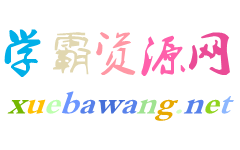《组织和供应链:社会与环境维度》(节选)翻译实践报告范文
发布于 2021-11-30 15:03 ,所属分类:知识学习综合资讯
 本文笔者在翻译过程中,译者是机械地参与翻译任务,而不是主动地总结在不同情况下所使用的翻译方法或策略。最后,译者的思维方式有时会受到原文的影响,从而产生翻译的问题,不符合目标读者的阅读习惯。鉴于以上的局限性,译者希望能对今后从事信息文本翻译研究的人提出一些建议。
本文笔者在翻译过程中,译者是机械地参与翻译任务,而不是主动地总结在不同情况下所使用的翻译方法或策略。最后,译者的思维方式有时会受到原文的影响,从而产生翻译的问题,不符合目标读者的阅读习惯。鉴于以上的局限性,译者希望能对今后从事信息文本翻译研究的人提出一些建议。
Chapter One Task Description
1.1 An introduction to the source text
This book focuses on the role of environmental and social factors in theinternational supply chains and industry networks, exploring whether socially-responsible and environmentally-conscious operations are complementary orconflictive to enterprises or organizations economic targets. Moreover, this bookelaborates on innovative approaches to the economic, ecological and socialperformance in supply networks from different perspectives, which can offer manyinsightful opinions for those who are working on it. In addition, it links sustainabilityto operational processes and illustrates specific application cases. Meanwhile, it coversthe social dimension of sustainability.
The rise of sustainability in management field forces enterprises to revisit theirconcepts of profitability that guide the operation of organizations. Social standards andecological targets represent critical factors that challenge industry networks. Theinterplay of these goals requires new insights from scientific research and managerialpractice. Therefore, new approaches and systems are needed to minimize the negativeenvironmental and social influence and to promote sustainability in all aspects. Thebook analyzes supply chains management theories and practices, with contributions bya large number of international experts. With the help of this book, professionals,policymakers, researchers and students will gain various valuable insights which itprovides into a topic of growing concern.
.................
1.2 An introduction to authors
This book was written by three authors, namely Marcus Brandenburg, Gerd J.Hahn and Tobias Rebs, who will be introduced in the following paragraphs.
Marcus Brandenburg is a professor for Logistics and Supply Chain Managementat Flensburg University ofApplied Sciences, Germany. He has obtained a doctoral anda higher doctoral degree at the University of Kassel, Germany. And his expertiseincludes model-based research on Sustainable Supply Chain Management. MarcusBrandenburg has authored numerous scientific journal papers and has also givenvarious presentations on that topic at scientific conferences. Moreover, he is co-editorof the book “Eco-Innovation and the Development of Business Models” published inthe Springer book series “Greening of Industry Networks Studies”.
Another is Gerd J. Hahn, who is a Professor of Operations Management andProcess Innovation at German Graduate School of Management & Law in Heilbronn,Germany.Also, he is a former top management consultant and has obtained a doctoraldegree from the Catholic University of Eichst tt-Ingolstadt. His research interestsinclude model-driven approaches and decision support systems for operations andsupply chain management in the manufacturing sector. Besides, Gerd Hahn is workingon topics in the field of innovation management of industrial and logistics processeswith a focus on strategy and leadership.
As for Tobias Rebs, he works in Sustainable Management and Economicsdepartment as a research and teaching assistant at the Chair of Supply ChainManagement of the University of Kassel. In addition, his research concentrates onstakeholder and risk management for sustainable supply chains. Methodologically, hisexpertise covers empirical research and content analysis as well as system dynamicsmodelling.
........................
Chapter Two Process Description
2.1 Pre-translation
Firstly, before the translator set about the task, she read through the original textto have a comprehensive understanding of its language style, words and sentencecharacteristics. Secondly, since the original text evolves business management, marketforecasting and data statistics etc., the translator should do a preview work throughreading relevant materials, such as marketing professional textbook MarketInvestigation and Forecasting and Tsinghua Management Series English textbooks:Supply Chain Management War. Meanwhile, the translator shall figure out the propertranslations for the name of persons, enterprises, books and abbreviations, and make aglossary to ensure the consistency and accuracy of terminologies in this task. Thirdly,according to the characteristics of the translation material, the translator should applyappropriate translation theories, which may help the translator choose appropriatetranslation methods in the process of translation. At this stage, the translator shouldhave a preliminary understanding of the text typology theory and correspondingtranslation strategies through skimming some related books. Finally, a feasibletranslation plan to finish the translation task on time is formulated.
To successfully complete this translation project, the translator has prepared someuseful translation tools, including various kinds of dictionaries and logistics theorybooks, such as: English-Chinese Dictionary written by Lu Gusun, English-Chinese-English Modern Logistics Dictionary (Second Edition) published by China CustomsPublishing House, Logistics English edited by Bai Shizhen. And online database suchas MBAthink-tank,Wikipedia Encyclopedia and Web Platform QueryTerminology etc.
....................
2.2 While-translation
During the translation process, more than 11000 words were translated intoChinese,whichtook muchtimeandenergy.Thankstothepreparationbeforetranslation,the translation process goes more smoothly.
However, there still are some difficulties. It is known to all that translation is along-term task. Besides the early-stage preparation, it is necessary to recheck theglossary and determine the final version of Chinese translation for terminologies andabbreviations in the source text. Moreover, the translator timely looked up thedictionary when dealing with some polysemes. Terminologies are the most vital part ofthis translation task. Once wrongly translated, it will cause a great misunderstanding tothe whole text content.
In the process of translation, the translator firstly developed the glossary accordingto the parallel text. A glossary can ensure the consistency of terms and the consistencyof translation style. Also, proofreading is a secondary translation, in which the detailsof the original text are modified. Various kinds of translation tools are used in thetranslation process, such as dictionaries (bothpaperand electronic),textbookoflogisticor economic management and relevant handbooks. Moreover, the translator appliedappropriate translation methods and strategies to deal with the problems in the sourcetext. Only with all these efforts can a qualified translation be produced.
..........................
Chapter Three Theoretical Basis ....................... 8
3.1 Text typology theory............................................ 8
3.2 Application of text type theory ............................ 9
Chapter Four Case Analysis .......................12
4.1 Lexical level................................... 12
4.1.1 Terminology............................. 13
4.1.2 Abbreviations........................... 17
Chapter Five Conclusion........................... 35
5.1 Major findings .................................... 35
5.2 Limitations and suggestions .......................... 36
Chapter Four Case Analysis
4.1 Lexical level
Vocabulary is a small unit that can be freely used in sentences and discourses. Interms of lexis, the foundation of translation lies in the accurate understanding andinterpretation of words. For logistics English which is relatively difficult to understandwith professional words and a large amount of initialism. These characteristics makethe transmission of logistics information more complex (Kong, 2011:17). In thistranslation project, it is vital for the translator to understand what does the original textwant to express and how to translate it properly. The translator should use appropriatestrategies to convey the accurate meanings in the source text with consideration of thedifferent types of words and their specific contexts.
In this translation practice, the translator mainly encountered two problems at thelexical level: one is the translation of professional terminology and abbreviation, andthe other is how to translation some non-professional words, which have specificmeanings in the logistics field. If they are mishandled, incomprehensible translationand unnatural expression mayoccuras thetranslatordonot givemuchattentionto them.Given the first problem, the translator made specific lists of terminologies andabbreviations and adopted translation methods such as free translation and annotation.For the second one, the translator applied the methods of amplification, omission,paraphrasing and conversion etc. Next part, the translator will discuss these problemsencountered during the process and the application of specific translation methods indetail.
........................
Chapter Five Conclusion
5.1 Major findings
In this section, major findings from doing the translation task and completing thereport will be explained.
For one thing, logistics English differs from daily English in many aspects whichis highly precise and professional. While completing such a translation task, thetranslator also gained more understanding of the development and future trends ofsustainable supply chains. In view of Reiss’s theory, this translation material belongsto content-focused text or informative text. When dealing with the informative texts,translators should pay more attention to the parallel texts and the target readers.Translators should be clear about their roles and bring them into full play to guaranteeeffective translation and high quality.
To begin with, in the lexical level, the logistic English text is full of terminologies,abbreviations and polysemes. The translator mainly applied the methods ofamplification, omission, paraphrasing and conversion to address the problemsencountered during this translation project. And the list of terminologies andabbreviations was attached to the report. Also, in the syntactical level, the translatorlisted three types of sentences which is frequently observed in this translation material,namely the long sentence, the passive sentence and the inanimate sentence. Each typewas analyzed elaboratively with several selected examples in the source text under theguidance of text typology theory. As for the textual level, the translator adoptedanaphoric translation skills to ensure the cohesion and coherence of the target text, andto convey the semantic information of the source text in a complete and appropriateway.
reference(omitted)




![[大数据] 大数据高端课程 炼数成金供应链物流—永恒的管理艺术 炼数成金供应](https://static.kouhao8.com/sucaidashi/xkbb/76a439251dcaf072bb3892610399eb13.jpg?x-oss-process=image/format,webp/resize,w_88/crop,w_88,h_88,g_nw)

![[大数据] 大数据高端课程 炼数成金供应链物流—永恒的管理艺术 炼数成金供应链/物流管理高端](https://static.kouhao8.com/sucaidashi/xkbb/b9148172888b966279d278caf637bd11.png?x-oss-process=image/format,webp/resize,w_88/crop,w_88,h_88,g_nw)






![[开发环境] 董飞老师超经典系统设计与实践教程带你全程实战学习 系统设计实战视频](https://static.kouhao8.com/sucaidashi/xkbb/cb2fec1a79d9c536b60726004adaa9cc.jpg?x-oss-process=image/format,webp/resize,w_88/crop,w_88,h_88,g_nw)

![Android] 13万个文件 Android各种studio SDK SQLite工具和环境打包下载](https://static.kouhao8.com/sucaidashi/xkbb/774d801e08b5249dc0f49c1f24999ccf.jpg?x-oss-process=image/format,webp/resize,w_88/crop,w_88,h_88,g_nw)





![[区块链技术] 区块链技术从入门到精通 区块链开发系列课程 系统入门学习区块](https://static.kouhao8.com/sucaidashi/xkbb/78fbbb5e62c6788c5d85a59af3843e03.jpg?x-oss-process=image/format,webp/resize,w_88/crop,w_88,h_88,g_nw)




![[职场必备] 2800套精选PPT模板,适用于各行业工作报告、年度报告、产品展示、艺术展示等](https://static.kouhao8.com/sucaidashi/xkbb/a0d0824030ea250b10d68496da5a2a28.jpg?x-oss-process=image/format,webp/resize,w_88/crop,w_88,h_88,g_nw)





相关资源